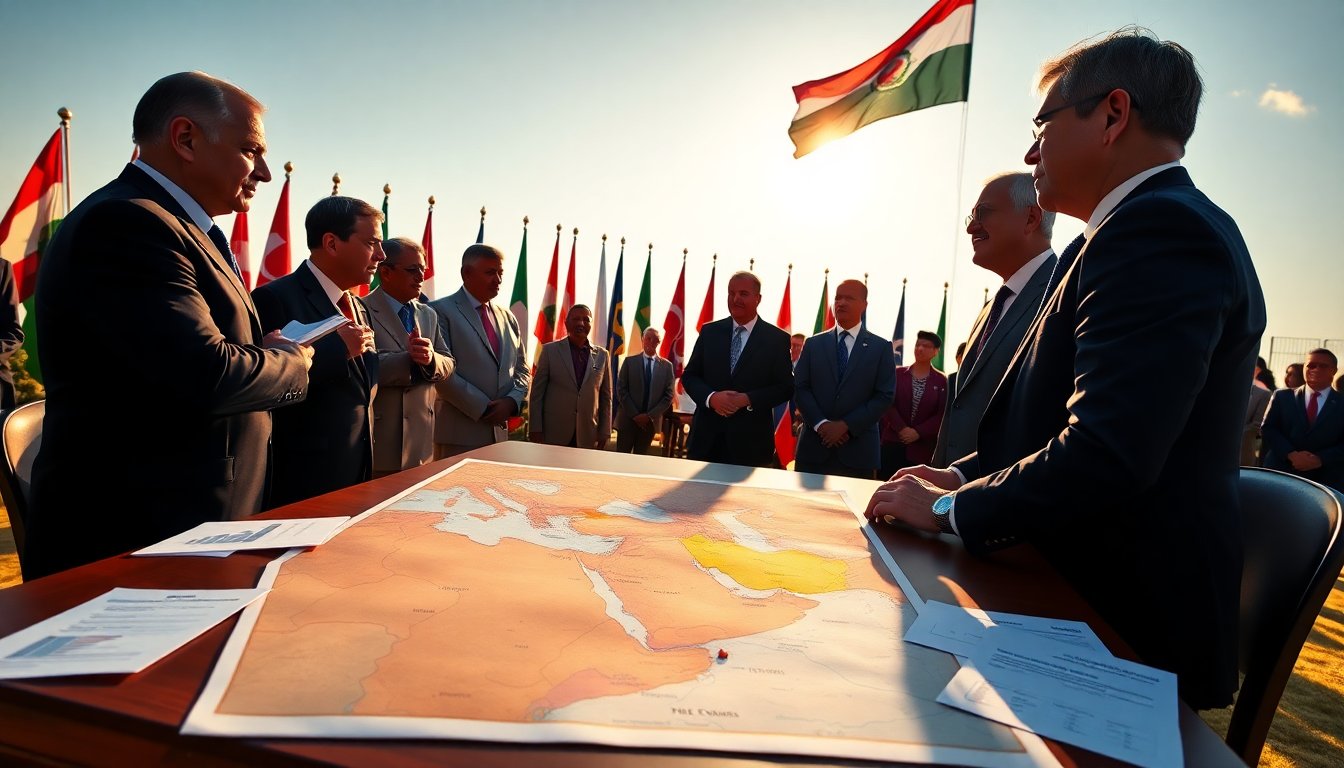Table of Contents
In a significant shift in regional diplomacy, President Trump has announced a breakthrough in the ongoing Gaza conflict. This declaration is crucial for both Israel and Arab nations as the president advocates for a new era of collaboration and peace. The recent agreement is positioned as a stepping stone toward a more stable future in the Middle East, although challenges remain in extending this framework across the region.
Advocating for unity in the Middle East
During his announcement, President Trump emphasized the need for both Israel and its neighboring Arab states to overcome years of discord. His vision centers on cooperation rather than conflict, aiming to create an environment conducive to diplomatic relations. The president expressed optimism that recent developments in Gaza could act as a catalyst for broader negotiations.
Historical context of the conflict
The Middle East’s history is complex, marked by a series of conflicts and diplomatic standoffs. For decades, the Israeli-Palestinian conflict has dominated regional politics, often spilling over into disputes involving neighboring Arab countries. Trump’s call for peace emerges at a time when the region appears poised for change, with several countries reassessing their diplomatic positions and alliances.
Challenges ahead for regional peace
While the president’s declaration has garnered some enthusiasm, the path to lasting peace is riddled with obstacles. Extending the Gaza agreement to a more comprehensive peace framework involves navigating a complex landscape of political interests and historical grievances. Many regional leaders remain skeptical, concerned that the recent truce may not endure and that progress could be undermined by ongoing hostilities.
The role of international players
The influence of international actors is also significant. Nations such as the United States, Russia, and members of the European Union play critical roles in shaping the dialogue surrounding Middle Eastern peace. Their involvement will be vital in facilitating discussions and ensuring that any agreements reached are sustainable and respected by all parties.
Moreover, the reactions of various stakeholders, including militant groups in Gaza and political factions in Israel, will significantly impact the trajectory of peace efforts. It remains uncertain how these groups will respond to the president’s vision and whether they will engage in a broader peace process.
A hopeful outlook for the future
Despite the challenges, there is hope that the momentum created by the recent Gaza agreement could lead to more substantial discussions among regional powers. Trump’s administration is eager to foster a collaborative spirit, urging nations to seize this moment to address long-standing issues. If successful, this could pave the way for a more peaceful coexistence that transcends decades of conflict.
As global attention focuses on the region, the actions taken by Israel and Arab nations in the coming months will be pivotal in determining whether this moment represents a fleeting opportunity or the beginning of a new chapter in Middle Eastern history. The journey to peace is often fraught with difficulties, but with concerted effort and genuine dialogue, a brighter future may be within reach.


